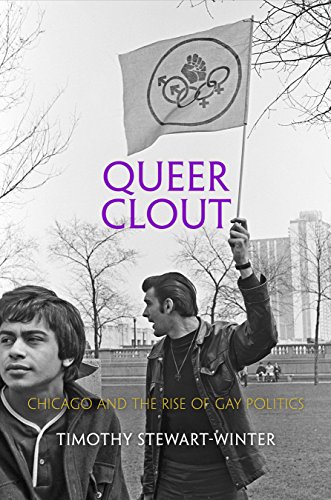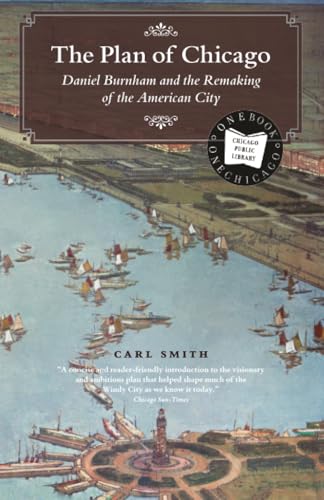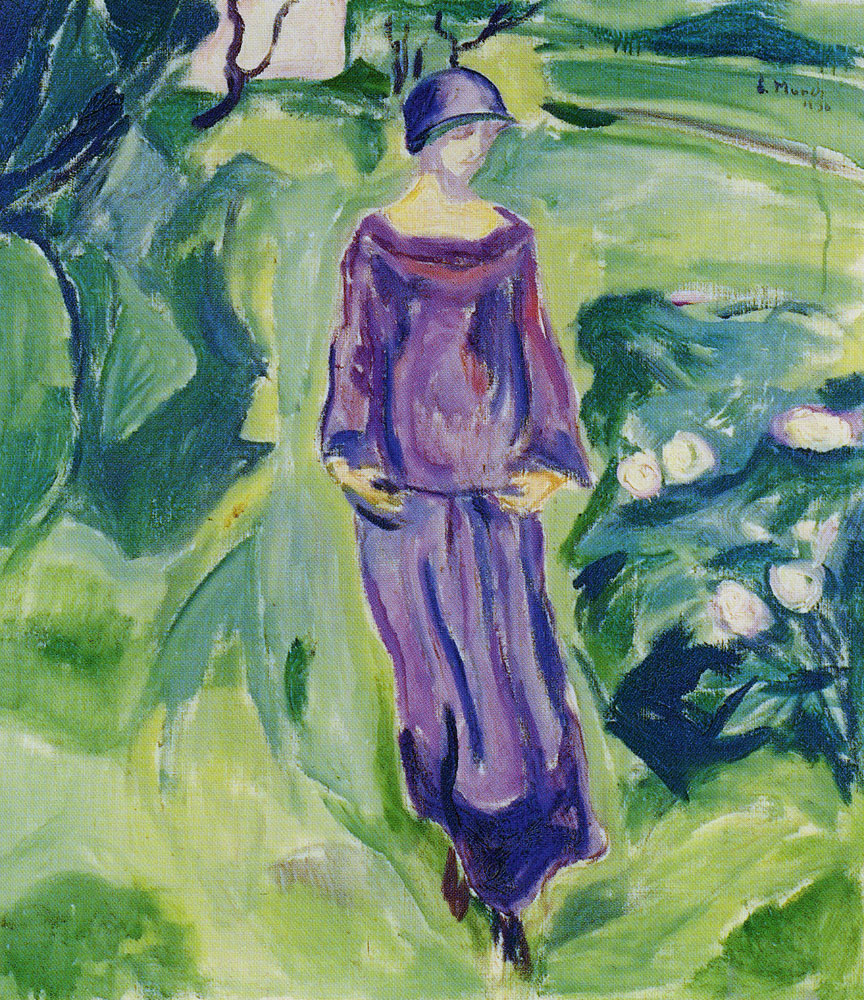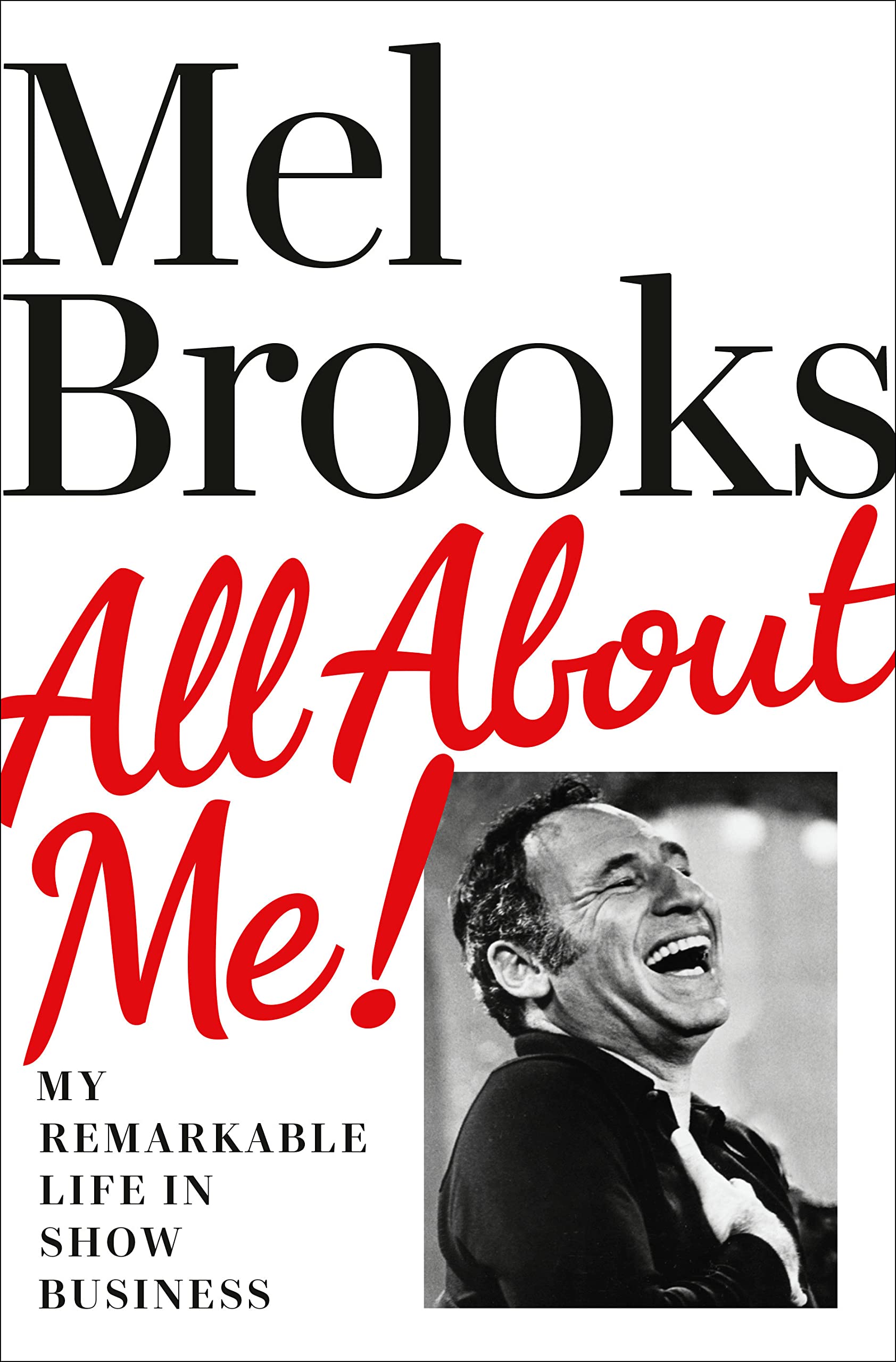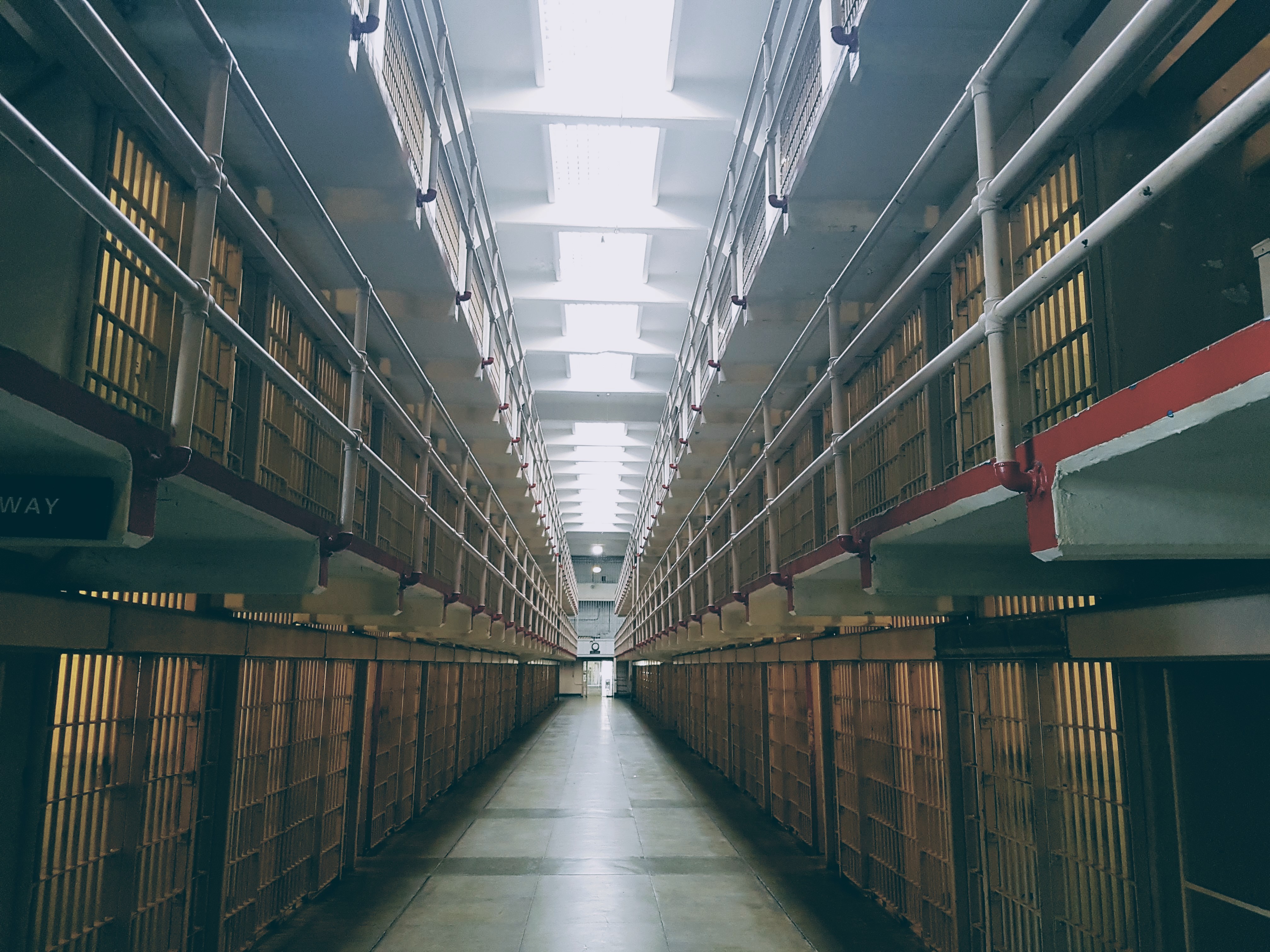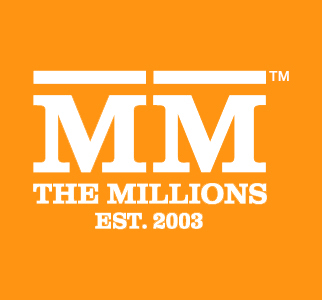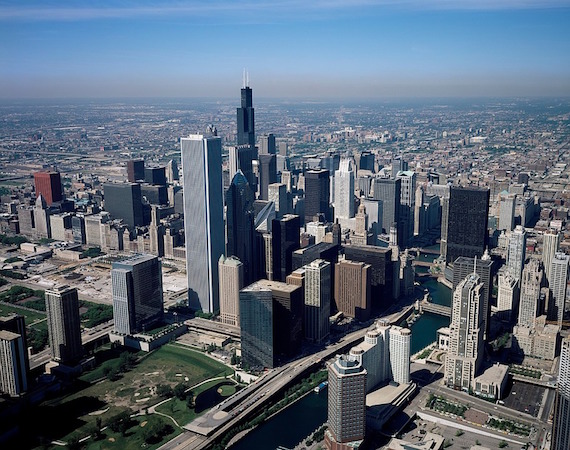
It makes little sense to come up with another list of “best” Chicago books. To select a “top” 10 (or 20 or 1,000) has always seemed arbitrary and destined for accusations of unjustified boosterism and hyperbole, even in a city built on a foundation of unjustified boosterism and hyperbole.
Fairly or unfairly, Chicago often serves as a general proxy for American cities. Love or hate this idea of ostensible representativeness (most Chicagoans kind of just roll their eyes), to embrace it can prove helpful in one respect: looking at ambition, failed policies, immigration, founding myths, and contemporary life in Chicago, you find resonance elsewhere in America. When thinking through issues confronted by American cities today (and maybe always) — unequal distribution of resources, violent policing, persistent de facto segregation, administrative corruption, privatization of public services, neoliberal coddling of gentrification, fallout from decades of environmental degradation, and others — Chicago serves as a vital case study.
The local commentariat here works itself into spitting rages whenever any outsider — especially if that outsider bears a New York Times business card — parachutes into the Loop for 36 hours to explain Chi-Town (seriously, stop it: no one here calls it that) to the rest of the world. So, designed as a “Chicago 101” syllabus, these books serve as starting points rather than final judgments. They place Chicago at the center of ideas about city life, in some case pressing back on prevailing narratives about American urbanism. Instead of best Chicago books, this selection focuses on books that use a Chicago-centric perspective to address challenges that other places similarly confront.
And given that I’m leaving town this fall and casting my lot with the outsiders when I transplant to — I cringe, really, it feels like betrayal — Brooklyn, I wanted to get this thing together before the movers arrive. Much is missing: I chose not to focus on novels because so many others have done so, and poetry is almost entirely absent. Nelson Algren and Carl Sandburg were not on this list because they are prerequisites for the list. But with the excuses that I don’t intend on completeness and the movers at the gates, I hope it’s acceptable to leave gaps that conversation might fill.
1. “It Really Wasn’t Much of a Place at All.”
 Dominic A. Pacyga opens Chicago: A Biography, his sweeping history of the Midwest’s largest city, with Father Jacques Marquette and Louis Jolliet. The priest and explorer first came upon a portage between the Chicago and Illinois Rivers in 1673. To build a canal here would be to connect the Great Lakes to the Mississippi, creating the largest inland waterway in the world and facilitating transportation from New York Harbor to the Mississippi along the entire midsection of the continent.
Dominic A. Pacyga opens Chicago: A Biography, his sweeping history of the Midwest’s largest city, with Father Jacques Marquette and Louis Jolliet. The priest and explorer first came upon a portage between the Chicago and Illinois Rivers in 1673. To build a canal here would be to connect the Great Lakes to the Mississippi, creating the largest inland waterway in the world and facilitating transportation from New York Harbor to the Mississippi along the entire midsection of the continent.
There’s a lot in between and after, and the last page of Pacyga’s book makes it to Barack Obama’s inauguration as President of the United States. That Pacyga covers so much — from the fire that destroyed one third of Chicago in 1871, to the city’s subsequent explosive growth (Chicago had a 1.7 million residents by 1900), to the Haymarket riot, to the 1968 DNC — should give a sense of the book’s scope. With so much terrain to cover, it comes as little surprise that even major events get relatively little space. Pacyga does, however, provide an especially detailed account of labor upheavals that characterized Chicago around the turn of the 20th century, providing context for understanding the city’s pushback against the rampant capitalism for which it earned its reputation.
Chicago: A Biography represents an essential starting point, primarily because it tracks the evolution of the city from a mucky swamp to a “global city.”
2. “Natural Advantages”

 William Cronon’s Nature’s Metropolis and Donald Miller’s City of the Century both present meticulously detailed and conceptually riveting pictures of Chicago in the 1800’s — a century of incredible expansion. Chicago’s founding hustlers (to borrow Nelson Algren’s term for his fellow Chicagoans) proclaimed as early as the 1830’s that a marsh named for stinking onions by indigenous people, seated aside gloriously fertile grasslands on the shores of an inland ocean, would one day represent “the most important point in the great west.” By the time of the World’s Columbian Exposition in 1893, the climax of Chicago’s ascendant century, that destiny had been realized.
William Cronon’s Nature’s Metropolis and Donald Miller’s City of the Century both present meticulously detailed and conceptually riveting pictures of Chicago in the 1800’s — a century of incredible expansion. Chicago’s founding hustlers (to borrow Nelson Algren’s term for his fellow Chicagoans) proclaimed as early as the 1830’s that a marsh named for stinking onions by indigenous people, seated aside gloriously fertile grasslands on the shores of an inland ocean, would one day represent “the most important point in the great west.” By the time of the World’s Columbian Exposition in 1893, the climax of Chicago’s ascendant century, that destiny had been realized.
Cronon and Miller interrogate the stakes of this transformation, asking about the lives it altered and about the enduring epistemic shifts that Chicago’s rise implied for the United States. Chicago transformed America’s relationship with the West and with capital itself, producing not only a vast urban expanse but also structuring what we would come to understand as “rural,” “suburban,” and “hinterland.” Cronon helps us understand how the city transformed goods into abstract commodities, reshaping our relationship to the food we buy and the environment we consume. He shows how rail transit didn’t just connect distant places, but rather restructured our very understanding of space and time. In notable contrast, Miller’s history dives into the enormous cast of characters that built Chicago and chronicled its rise. City of the Century’s meticulous characterization of the “hustlers” that poured concrete into Chicago’s foundations provides singular descriptions of this cast’s influence on the city’s trajectory.
3.“High Strung, Contagious Enthusiasm”
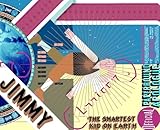
 Erik Larson’s The Devil in the White City has become standard literary fare for newcomers to Chicago, and one will often find multiple copies in a transplant’s household. Larson dramatizes the planning of the aforementioned World’s Columbian Exposition, which marked the 400th anniversary of Christopher Columbus’s voyage to America. Planning required construction of an enormous classical-inspired city in Jackson Park on the South Side, involving many of the city’s (and nation’s) architectural and economic leaders, and marking Chicago’s global coming-out party.
Erik Larson’s The Devil in the White City has become standard literary fare for newcomers to Chicago, and one will often find multiple copies in a transplant’s household. Larson dramatizes the planning of the aforementioned World’s Columbian Exposition, which marked the 400th anniversary of Christopher Columbus’s voyage to America. Planning required construction of an enormous classical-inspired city in Jackson Park on the South Side, involving many of the city’s (and nation’s) architectural and economic leaders, and marking Chicago’s global coming-out party.
Lurking in the crowds, H.H. Holmes — the book’s eponymous devil — became one of America’s first serial killers. He committed scores of murders silently throughout the fair, the urban anonymity afforded him by the crowds facilitating his crimes. Larson’s book has become important, not just as a document that depicts this contradiction between glorious spectacle and urban underbelly, but also because his romanticized vision of Chicago squares with how the city still views the fair. Its spectacle (and specter) looms large in Chicago’s self-conception.
Where Larson spends time examining the drama among fair planners, Chris Ware’s Jimmy Corrigan, Smartest Kid on Earth presents an imaginative — and sparely, gorgeously rendered — view of the event’s history through a child’s eyes. An emotionally paralyzed man living in present-day Chicago, Jimmy attempts to reconnect with his father. In scenes from the 1800s, the monumental fair casts similar shadows over an inter-generational Corrigan family history. Ware depicts how the tendrils of Chicago’s past reach to its present in a city with a complicated history.
4. Plans for Chicago

 To understand how American cities thought of their futures at the turn of the 20th century, one must consider two very different city planners in Chicago.
To understand how American cities thought of their futures at the turn of the 20th century, one must consider two very different city planners in Chicago.
Jane Addams founded Hull-House in 1889, well before the Columbian Exposition’s electric lights flickered on. Her settlement house ultimately comprised an enormous complex of buildings in one of Chicago’s poorest immigrant neighborhoods. In Twenty Years at Hull House, one gets the sense of Addams’s determination to reformulate the way that cities treated the poor and immigrant classes — with dignity and a focus on individuals. She charted a course for services and advocacy for the poor that formed the foundation of social work and emphasized that communities matter in urban development.
Concurrently, Daniel Burnham — architect of the Columbian Exposition — moved on from the fair to create an urban plan that would transform Chicago and cement the city’s status as a global metropolis. Carl Smith’s The Plan of Chicago makes it clear that Burnham’s monumental visions leave a complicated legacy. Despite “sincere” hopes that “City Beautiful” concepts would ennoble the poor, the Plan of Chicago deserves criticism for overlooking conditions of daily life for those to whom Addams ministered. As much as it marks a culmination of optimism in city planning, it lays some of the foundation for abysmal policies that would haunt public housing in Chicago and in many other cities. Moreover, it marks a kind of opening chapter in “public-private partnerships” that govern contemporary efforts to encourage markets to solve urban problems.
5. Bigger Ambitions for Chicago-Born Novels
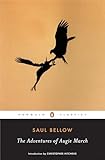
 Native Son and The Adventures of Augie March belong at the heart of any serious conversation about Chicago novels (though I find Augie difficult to get through). The ambitions of Richard Wright and Saul Bellow in these two midcentury novels rise to the level of Chicago’s ambitions for itself. Their alternatingly devastating and ennobling investigations of individual agency and social determination in two unforgettable protagonists — Augie and Bigger Thomas — make them essential to an understanding of American ideas about selfhood, race, and ambition.
Native Son and The Adventures of Augie March belong at the heart of any serious conversation about Chicago novels (though I find Augie difficult to get through). The ambitions of Richard Wright and Saul Bellow in these two midcentury novels rise to the level of Chicago’s ambitions for itself. Their alternatingly devastating and ennobling investigations of individual agency and social determination in two unforgettable protagonists — Augie and Bigger Thomas — make them essential to an understanding of American ideas about selfhood, race, and ambition.
It can be easy to forget that these novels take place in Chicago; they belong to us all and not to any one city. “I am an American,” Augie declares right at his beginning. “Chicago born” comes only second, though it acts as validation of his Americanness. Upon reflection, one cannot imagine either novel taking place in any other American city — one of huge immigrant classes fragmented into neighborhoods bitterly segregated along racial and ethnic lines.
Reading these novels together with a spatial understanding of Chicago deepens one’s appreciation for how wide a gulf exists between the lives of their protagonists and the populations they represent. Augie and Bigger find themselves in Hyde Park, for example (which still boasts of its veneer of racial diversity relative to other neighborhoods), but their experiences there are utterly separate. From this smallest of details — the incongruity of lives despite physical proximity — emerges persistent truths about the structure of racial dynamics in American cities.
6. Making the Most of Migration

 The Warmth of Other Suns, Isabel Wilkerson’s mammoth history of the Great Migration, won the 2015 Chicago Reader’s poll of “Greatest Chicago Book.” Chicago shares billing with LA and NYC as important destinations for those whose lives Wilkerson traces from the rural south to the urban north and west, but there can be no doubt that the Great Migration wrought indelible changes in the social fabric of every region in the United States from World War I through the 1970s; and in this story, Chicago plays a central role. Unwavering in her depictions of the political and physical violence of Jim Crow and nuanced in both her telling of personal stories and descriptions of broader effects of the migration on cities and people, Wilkerson’s book is the seminal text on the largest internal migration in American history.
The Warmth of Other Suns, Isabel Wilkerson’s mammoth history of the Great Migration, won the 2015 Chicago Reader’s poll of “Greatest Chicago Book.” Chicago shares billing with LA and NYC as important destinations for those whose lives Wilkerson traces from the rural south to the urban north and west, but there can be no doubt that the Great Migration wrought indelible changes in the social fabric of every region in the United States from World War I through the 1970s; and in this story, Chicago plays a central role. Unwavering in her depictions of the political and physical violence of Jim Crow and nuanced in both her telling of personal stories and descriptions of broader effects of the migration on cities and people, Wilkerson’s book is the seminal text on the largest internal migration in American history.
Meanwhile, Adam Green’s Selling the Race provides an incisive contribution to conversations about how black Chicagoans carved a place for culture in modern America. Against prevailing narratives that cast black Americans (including many new migrants to Chicago) as victims of modernity, swept up by forces that looked to capitalize on anxieties of belonging, Green argues that they became powerful agents of cultural production. Examples from Mahalia Jackson to Ebony and Jet magazine (product of the Chicago-based Johnson Publications) present a rich picture of how much of black culture was generated and packaged for sale to wide audiences in Chicago.
7. Obsessions with the Ordinary

 No city values the “ordinary” so dearly as Chicago. And if Studs Terkel stands as the everyman’s greatest champion, his Division Street America best ties the city’s affection for ordinariness to American identity. It would be a mistake to suggest that Terkel shilled the myth of a “city that works” (a term coined by Richard J. Daley). Rather, his no-nonsense portrayals of everyday Chicagoans — rich, poor, Democrat, Republican, racist, gay, jag-baggy, and others — coalesce to create this affecting hodgepodge. As Alex Kotlowitz (no slouch himself in the department of spotlighting and writing movingly about injustice in Chicago) has observed, there’s always Studs in the background — curious, probing, insisting, and asking questions that prompt often-ignored individuals to tell their stories.
No city values the “ordinary” so dearly as Chicago. And if Studs Terkel stands as the everyman’s greatest champion, his Division Street America best ties the city’s affection for ordinariness to American identity. It would be a mistake to suggest that Terkel shilled the myth of a “city that works” (a term coined by Richard J. Daley). Rather, his no-nonsense portrayals of everyday Chicagoans — rich, poor, Democrat, Republican, racist, gay, jag-baggy, and others — coalesce to create this affecting hodgepodge. As Alex Kotlowitz (no slouch himself in the department of spotlighting and writing movingly about injustice in Chicago) has observed, there’s always Studs in the background — curious, probing, insisting, and asking questions that prompt often-ignored individuals to tell their stories.
Vivian Maier, whose recently discovered work also transacts in Chicago’s obsession with the ordinary, may outshine Terkel decades from now. She embodies the perfect female flâneur (or, as historian Lauren Elkin has rightly insisted, flâneuse). Maier spent most of her life as a nanny in Chicago, secretly capturing some 100,000 images on the city’s streets. The domestic nature of her work all but guaranteed invisibility, given chauvinistic structures of artistic production and labor valuation. But when John Maloof was researching the Northwest Side neighborhood of Portage Park in 2007, he came upon Maier’s forgotten images. He bought and disseminated them. Vivian Maier: A Photographer Found is a great introduction and Maier now belongs in discussions about great American street photographers. Hers is an utterly Chicago story.
8. Daley’s Siege

 Richard J. Daley reigned over much of 20th-century Chicago. He ruled the city from 1955 until 1971, dominated Democratic Machine politics, and earned all of his enemies. Several books on this list describe Daley, and his complicated legacy plays out differently in their assessments. For this reason, I have left out of this list any Daley biographies.
Richard J. Daley reigned over much of 20th-century Chicago. He ruled the city from 1955 until 1971, dominated Democratic Machine politics, and earned all of his enemies. Several books on this list describe Daley, and his complicated legacy plays out differently in their assessments. For this reason, I have left out of this list any Daley biographies.
Perhaps no account of Daley proves as brutal as Norman Mailer’s Miami and the Siege of Chicago. In his run-up to descriptions of protests and Chicago police reprisals, Mailer writes, “Daley was no national politician, but a clansman.” The 1968 DNC, convened by Daley, proved a flashpoint in American political history. The chaos fragmented the Democratic Party nationally, and set the stage for Richard Nixon’s victory in November. In Mailer’s description of Chicago, his clear affection for the city makes it all the more heartbreaking (despite his intimations of inevitability) that the fractures of American society should appear on live television broadcasts from Michigan Avenue.
Algren-esque musings notwithstanding, Mailer remains a Chicago outsider. So it feels appropriate to add Chicagoan Haskell Wexler’s film Medium Cool to this list of books. Combining documentary footage of the convention protests with a fictional film, Wexler enlivens and deepens Mailer’s account. He depicts the tumult of 1968 like perhaps no other text from that stormy year. As a bonus, Medium Cool echoes experiments happening in documentary at places like Kartemquin films, which would go on to produce the now-canonical Chicago films Hoop Dreams and The Interrupters.
9. Out in Chicago
 The most recently published addition to this list is Timothy Stewart-Winter’s Queer Clout. In it, Stewart-Winter troubles the dominant narrative of 20th-century gay rights activism in the United States, which typically treats New York and San Francisco as the two central cities, often to the exclusion of the Midwest. He fills this narrative with a cacophonous history of LGBTQ culture and activism in Chicago, where firings, shakedowns, police bribes, and bar raids were just as much a part of life throughout the city as anywhere else.
The most recently published addition to this list is Timothy Stewart-Winter’s Queer Clout. In it, Stewart-Winter troubles the dominant narrative of 20th-century gay rights activism in the United States, which typically treats New York and San Francisco as the two central cities, often to the exclusion of the Midwest. He fills this narrative with a cacophonous history of LGBTQ culture and activism in Chicago, where firings, shakedowns, police bribes, and bar raids were just as much a part of life throughout the city as anywhere else.
Effective action depended ultimately on collaborations between gay rights and black civil rights groups, and the pursuit of delicate coalitions. Queer Clout traces the fits and starts of these collaborations and coalitions. Post-Orlando, Stewart-Winter’s discussion of the importance of gay bars for LGBTQ individuals — historically and presently — seems especially valuable. Bars served ground zero for exploitation by law enforcement, but also as meeting places and (most of the time) safe havens.
Stewart-Winter cautions against readily equating the gay rights movement with the civil rights movement; the layering of race, sexual orientation, and gender identification necessitates a more complicated picture. And his affecting description of unequal access to healthcare among Chicagoans affected by AIDS creates a devastating picture of failed policies. In a city divided between a black south and white north, lack of access to educational resources, preventive care, and treatment becomes a reminder of how segregation produces injustice that communities and policymakers must continue to fight to address.
10. Humboldt Park

 To understand gentrification in Chicago, head to the Humboldt Park neighborhood, where protests against rising rents, tax hikes, and teardowns took place recently on the 606. This park, built on a former rail line, echoes efforts in other cities to erase industrial infrastructure from urban landscapes. Having whetted the appetite of developers, The 606 has accelerated the pace at which Humboldt Park is becoming unaffordable for longtime residents.
To understand gentrification in Chicago, head to the Humboldt Park neighborhood, where protests against rising rents, tax hikes, and teardowns took place recently on the 606. This park, built on a former rail line, echoes efforts in other cities to erase industrial infrastructure from urban landscapes. Having whetted the appetite of developers, The 606 has accelerated the pace at which Humboldt Park is becoming unaffordable for longtime residents.
Sandra Cisneros grew up in Humboldt Park. Her beloved The House on Mango Street takes place in a similar fictional neighborhood. Traditional readings peg the novella as the coming-of-age story of Esperanza, a daughter of Mexican immigrants. Cisneros experiments with form — the book is a series of short vignettes — to explore Esperanza’s struggles with sexuality, national identity, class, and the Spanish language. The poetic language of these depictions alone makes an argument for the work’s importance.
To read Mango Street alongside Chris Ware’s Building Stories widens the lens through which readers can examine the relationship between individual and community identity. Ware’s unnamed protagonist, who loses a leg in a childhood accident, lives in Humboldt Park. Her story unfolds across 14 pamphlets, broadsheets, books, and other objects. Like Cisneros, Ware’s formal cartwheels advance conversations about identity. As with Cisneros, the book’s themes center on self-description — again, a disjointed and chronologically jumbled task (there’s no “right” way to read the book). He’s also interested in the evolving neighborhood, as the heroine moves away and revisits the three-flat in which so much life happens.
11. Whose City?

 What does Chicago look like today? Natalie Moore’s The South Side, published last year, combines history and memoir to describe neighborhoods in the city that are too often represented in national news media in one-dimensional stories of gun violence. Her book draws productively from her own biography of a childhood in middle-class and largely black Chatham, and feels less concerned with comprehensiveness than with augmenting and correcting the record. As the current South Side reporter for the local NPR affiliate, Moore brings a great deal of connections and numerous voices to this project.
What does Chicago look like today? Natalie Moore’s The South Side, published last year, combines history and memoir to describe neighborhoods in the city that are too often represented in national news media in one-dimensional stories of gun violence. Her book draws productively from her own biography of a childhood in middle-class and largely black Chatham, and feels less concerned with comprehensiveness than with augmenting and correcting the record. As the current South Side reporter for the local NPR affiliate, Moore brings a great deal of connections and numerous voices to this project.
By contrast, Larry Bennett’s The Third City offers a picture of contemporary Chicago that seems at times too rosy in its assessment of the younger Richard M. Daley’s infrastructure investments (the book was published before the first term of Mayor Rahm “One Percent” Emanuel). Visions of Chicago as a global city — one that attracts entrepreneurs to ride the next wave of innovators was for a time called “Silicon Prairie” — ring with the optimism of the 19th century. It presents a picture of Chicago that has become popular among elected officials looking to attract private money and foreign tourists. This vision of Chicago’s third incarnation (a vision of privatization premised on the notion that a city’s chief ambition should be to attract capital to its core) looks like a new version of Burnham’s century-old Plan. It has fans elsewhere.
How to square this vision with the neighborhoods that sustain Chicago, and other cities, remains an unanswered question.
12. There Are No Two Finer Words…
 Among garrulous Chicagoans, most will grudgingly agree: we miss Hot Doug’s. Chicago treasure Doug Sohn’s sausage emporium was not only a celebration of encased meats, but equally a democratizing force on a desolate block on California Avenue in the Avondale neighborhood. One waited in line (often for more than an hour) whether one was Anthony Bourdain, Aziz Ansari, or even Doug’s dad. In Hot Doug’s, the coffee table book that cashed in on Doug’s decision to close the shop not long ago, local voices weigh in on The Line: when they waited, how long they waited for, who got engaged to whom while waiting, who had to rush to the hospital to deliver a baby, etc.
Among garrulous Chicagoans, most will grudgingly agree: we miss Hot Doug’s. Chicago treasure Doug Sohn’s sausage emporium was not only a celebration of encased meats, but equally a democratizing force on a desolate block on California Avenue in the Avondale neighborhood. One waited in line (often for more than an hour) whether one was Anthony Bourdain, Aziz Ansari, or even Doug’s dad. In Hot Doug’s, the coffee table book that cashed in on Doug’s decision to close the shop not long ago, local voices weigh in on The Line: when they waited, how long they waited for, who got engaged to whom while waiting, who had to rush to the hospital to deliver a baby, etc.
Doug reminded us all (always calling us “my friend”) that in Chicago, one waits in line like civilized people. The snow, cold, heat, wind, and rain be damned.
13. Coda: Next Steps

 There’s so much more to read and through-lines to trace from Carl Sandburg to Gwendolyn Brooks to Aleksandar Hemon to Chance the Rapper. Those interested in extensive lists of Chicago novels should consult, all kidding aside, several best-of lists already out there. My favorite was published by the dearly departed local site Gapers Block, and it organizes novels by neighborhood. Chicago magazine published a fun list of new Chicago-centric reads for the summer. I’m excited to read Margo Jefferson’s Negroland and Darryl Pinckney’s Black Deutschland. And Curbside Splendor Publishing (a local house) recently put out The Empty Bottle Chicago: 21+ Years of Music / Friendly / Dancing, a history of one of the Northwest Side’s most-loved venues.
There’s so much more to read and through-lines to trace from Carl Sandburg to Gwendolyn Brooks to Aleksandar Hemon to Chance the Rapper. Those interested in extensive lists of Chicago novels should consult, all kidding aside, several best-of lists already out there. My favorite was published by the dearly departed local site Gapers Block, and it organizes novels by neighborhood. Chicago magazine published a fun list of new Chicago-centric reads for the summer. I’m excited to read Margo Jefferson’s Negroland and Darryl Pinckney’s Black Deutschland. And Curbside Splendor Publishing (a local house) recently put out The Empty Bottle Chicago: 21+ Years of Music / Friendly / Dancing, a history of one of the Northwest Side’s most-loved venues.
But now, it’s time to get to packing.
Image Credit: Pixabay.











